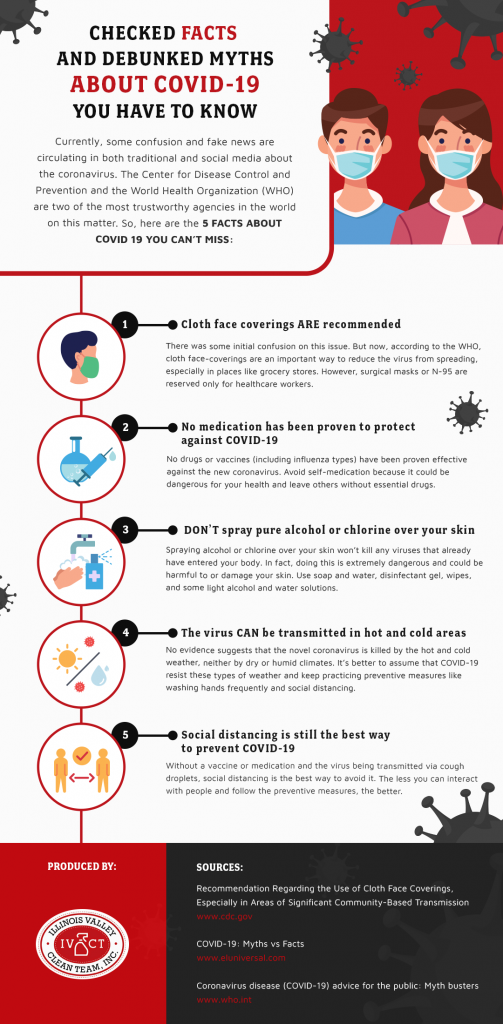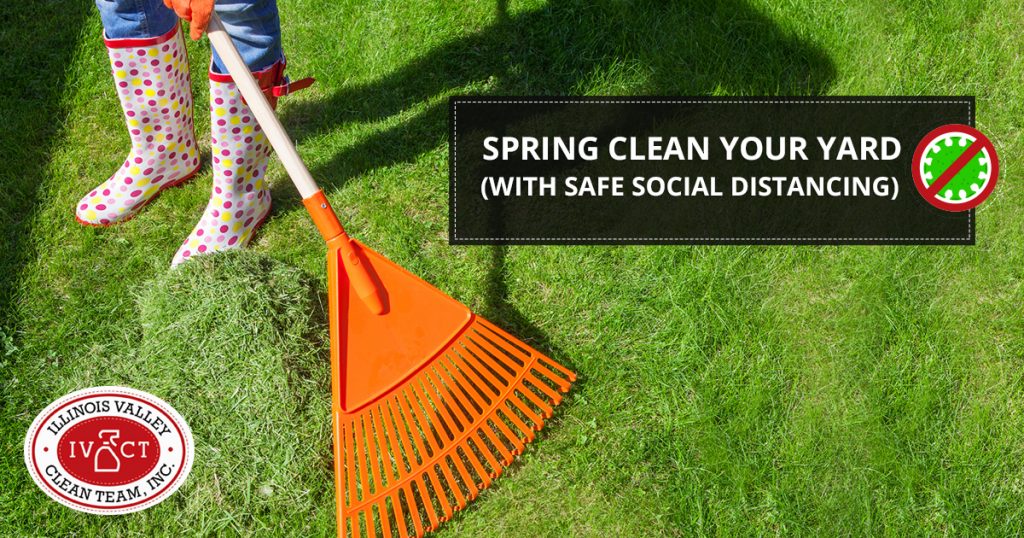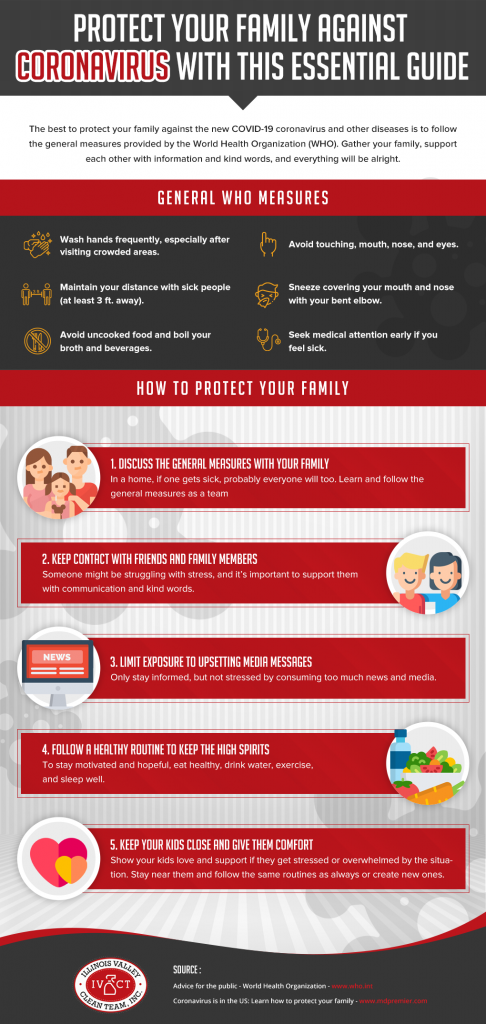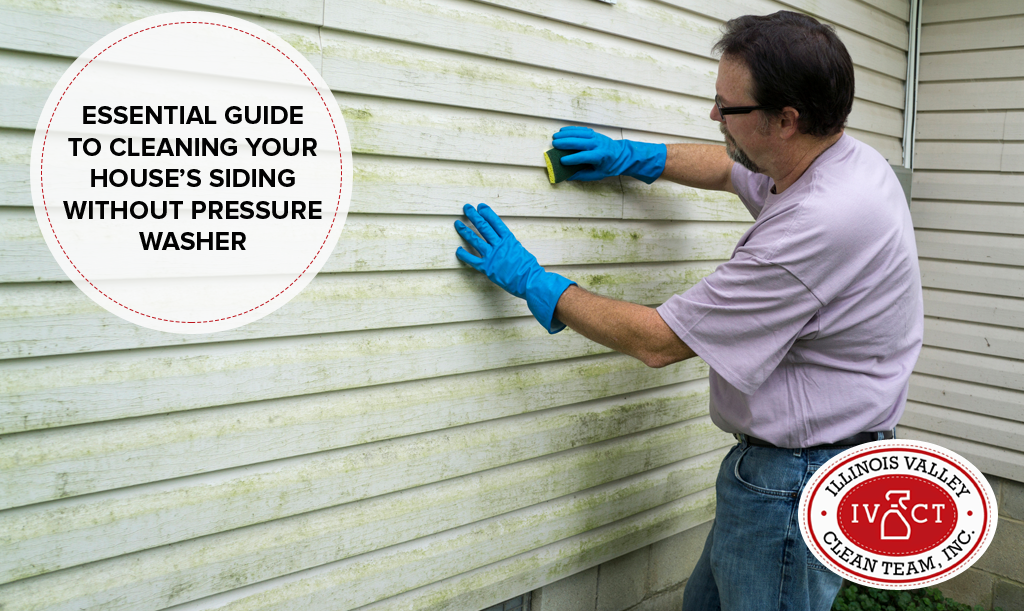
As quarantine limitations slowly relent across the nation, people are yearning for their freedom often without regard for their or others’ safety or health. With so much left unknown about COVID-19, many people question the possibility of contracting the virus on clothing and shoes—among other things. According to Erin Hays, writer for DoctorOz.com, “current evidence suggests that the virus can survive for hours to days on a variety of surfaces.” Let Illinois Valley Clean Team show you the safe way on how to disinfect clothes and shoes.
Leave Shoes at the Door
While some shoes are made of cloth-like material, they also have rubber and leather parts similar to plastic. According to the National Institute of Health (NIH), COVID-19 can survive on plastic for two to three days. As a good habit to begin, leave your shoes at the door. Before coming inside (weather conditions and situation permitting), remove and disinfect shoes outside then let them air dry before bringing them in for the evening.
Hot Water/Hot Heat
For normal, disinfecting laundry procedures, include hot water (100 degrees F. or above with 140 degrees F being optimal), a safe disinfectant like hydrogen peroxide (add 1/2 cup of peroxide to your laundry once the water is running to prevent any bleaching), and the highest heat setting per fabric instructions. Remember to separate clothes from those who are ill and to use rubber gloves. Also be sure to disinfect your laundry basket after each use, especially after someone is sick.
Dry Clothes Outside
Sunlight is extremely sanitizing, so if you can line dry your laundry in the sun then it will give your clothes an extra disinfecting boost…about 30 minutes in the sun (on each side) is enough to kill most surface bacteria. Be warned, overtime natural sunlight will fade dark colors.
Essential Oils
Like sunlight, mother nature provides specially crafted disinfectants from the essence of flowers, herbs, spices, and more. Essential oils have a variety of pathogen-fighting powers. Some of the best known antibacterial, antifungal, antiseptic essential oils include tea tree oil, lavender, thyme, lemon, and Thieves oil. To use, add ten drops to each load depending on the desired scent strength. Use caution if you are pregnant or around children.
UV Shoe Station
Transform your hall closet into DIY sterilization and disinfection station not only for your shoes but also umbrellas, handbags, grocery bags, school bags, work equipment, coats, etc. UV light systems come as complete packages or as single light bulbs with variable wattages. For a closet setup at home, try the UVC Led Corn Light Bulb with Remote Control 30/60min Timer for Home. The bulb works with most standard light sockets. Warning: do not expose your eyes and skin to UV light while in use. UV lights are most effective if the objects are kept under exposure for 30 – 60 minutes.
DIY Disinfectant Spray
When your laundry needs a little bit of extra love and care, consider trying an alternative to harsh commercial chemicals that not only could damage your clothes but also your health. One of the best and most used DIY disinfectants sprays for clothes is a 50/50 mixture of white vinegar to distilled water. The vinegar solution works to brighten, soften, and kill odors in your laundry. If you don’t like the scent of vinegar, just add a couple of drops of essential oil to the bottle. Regardless of whether or not COVID-19 can live on your clothes, direct exposure is believed to be the primary form of transmission of the virus. Therefore, even with the ease on restrictions its crucial to maintain social distancing, remote working, wearing face masks, limit shopping trips, avoid touching your face when out in public, wash your hands often, learn how to sanitize shoes but most importantly protect those you love without bringing harm to yourself or others…whether mentally, physically, or both.



